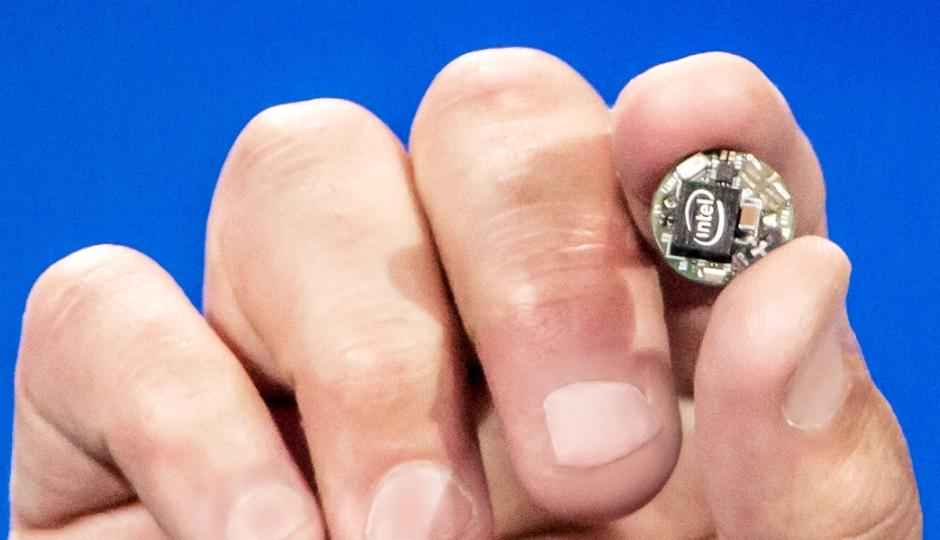CES 2015: Intel unveils Curie, new module for compact wearables

After having missed out on smartphone revolution, Intel is now shifting its focus on wearables. The company has just released Curie a new module that allows developers to build more compact wearables.
Intel has showcased some futuristic technologies at the ongoing CES 2015 event. Intel's future seems to be greatly focused on wearables as it unveiled Curie module, a low-powered hardware product that can be used in a range of wearables including rings, bands and glasses.
Intel's Curie Module is based on an updated version of its Quark Chip, called the Quark SE. The chip comes with features such as 32-bit microcontroller with 384 kB of flash memory and 80 kB SRAM, Bluetooth LE, low-power sensor hub, six-axis combination accelerometer and gyroscope. It runs Viper, an open source software that can capture information via activity recognition and built-in features.
The new module is supposed to help speed up development in the wearable segment. It aims to help developers come up with more compact wearable hardware. Apart from the industry, the module is also important for Intel.
“Last year, we partnered with leading technology, fashion and lifestyle brands to help build a robust wearable ecosystem," said Mike Bell, vice president and general manager of Intel’s New Devices Group. “With the Intel Curie module, Intel will continue to push the envelope of what’s possible and enable companies to quickly and effectively build low-power wearables in various form factors.”
Intel was a dominant player in the era of PCs, though it missed out on the smartphones. With wearables deemed the future, Intel is already making efforts to tap the segment. The company recently tied up with several wearable companies such as Fossil and eyeglass maker Luxottica.
It may be recalled the company had launched a smart bracelet called the MICA, which allows users to text and receive calendar alerts without carrying a smartphone.
Intel's new Curie Module is expected to be commercially launched in the second half of the year.
Source: Intel




